Hsp90 beta Recombinant Rabbit Monoclonal Antibody [SY46-01]

製品仕様
今すぐ注文,【现货】
問い合わせをクリックCatalog# ET1605-56
Hsp90 beta Recombinant Rabbit Monoclonal Antibody [SY46-01]
-
WB
-
IF-Cell
-
IF-Tissue
-
IHC-P
-
FC
-
Human
-
Mouse
-
Rat
概要
製品名
Hsp90 beta Recombinant Rabbit Monoclonal Antibody [SY46-01]
抗体の種類
Recombinant Rabbit monoclonal Antibody
免疫原
Recombinant protein within Human Hsp90 beta aa 485-724 / 724.
種属反応性
Human, Mouse, Rat
検証された応用例
WB, IF-Cell, IF-Tissue, IHC-P, FC
分子量
Predicted band size: 83 kDa
陽性対照
HEK-293 cell lysate, HeLa cell lysate, A431 cell lysate, K-562 cell lysate, RAW264.7 cell lysate, PC-12 cell lysate, mouse heart tissue lysate, rat heart tissue lysate, human liver tissue lysate, mouse liver tissue lysate, rat liver tissue lysate, human kidney tissue lysate, mouse kidney tissue lysate, rat kidney tissue lysate, HeLa, NIH/3T3, human colon carcinoma tissue, human breast carcinoma tissue, human tonsil tissue.
結合
unconjugated
クローン番号
SY46-01
RRID
製品の特徴
形態
Liquid
保存方法
Shipped at 4℃. Store at +4℃ short term (1-2 weeks). It is recommended to aliquot into single-use upon delivery. Store at -20℃ long term.
保存用バッファー
1*TBS (pH7.4), 0.05% BSA, 40% Glycerol. Preservative: 0.05% Sodium Azide.
アイソタイプ
IgG
精製方法
Protein A affinity purified.
応用希釈度
-
WB
-
1:5,000-1:20,000
-
IF-Cell
-
1:1,000
-
IF-Tissue
-
1:100-1:500
-
IHC-P
-
1:400
-
FC
-
1:500-1:1,000
論文における応用例
| WB | 確認する 6 以下の論文 |
| IHC-P | 確認する 1 以下の論文 |
論文における種属
| Mouse | 確認する 5 以下の論文 |
| Maize | 確認する 1 以下の論文 |
| Channa argus | 確認する 1 以下の論文 |
ターゲット
機能
The heat shock response was first described for Drosophila salivary gland cells and morphologically consists of a change in their polytene chromosome puffing patterns that involves de novo synthesis of a few proteins. Similar heat shock proteins were later discovered in bacterial chicken and mammalian cells, and have been subsequently studied in other organisms. A series of proteins including HSP 90, HSP 70, HSP 20-30 and ubiquitin are induced by insults such as temperature shock, chemicals and other environmental stress. A major function of HSP 90 and other HSPs is to act as molecular chaperones. HSP 90 forms a complex with glucocorticoid receptor (GR), rendering the non ligand-bound receptor transcriptionally inactive. HSP 90 binds the GR as a heterocomplex composed of either HSP 56 or Cyclophilin D, forming an aporeceptor comiplex. HSP 90 also exists as a dimer with other proteins such as p60/sti1 and p23, forming an apo-receptor complex with estrogen and androgen receptors.
背景文献
1. Carpp LN et al. Quantitative proteomic analysis of host-virus interactions reveals a role for Golgi brefeldin A resistance factor 1 (GBF1) in dengue infection. Mol Cell Proteomics 13:2836-54 (2014).
2. El-Kasaby A et al. A cytosolic relay of heat shock proteins HSP70-1A and HSP90 monitors the folding trajectory of the serotonin transporter. J Biol Chem 289:28987-9000 (2014).
配列相同性
Belongs to the heat shock protein 90 family.
翻訳後修飾
Ubiquitinated in the presence of STUB1-UBE2D1 complex (in vitro).; ISGylated.; S-nitrosylated; negatively regulates the ATPase activity.; Phosphorylation at Tyr-301 by SRC is induced by lipopolysaccharide. Phosphorylation at Ser-226 and Ser-255 inhibits AHR interaction.; Methylated by SMYD2; facilitates dimerization and chaperone complex formation; promotes cancer cell proliferation.; Cleaved following oxidative stress resulting in HSP90AB1 protein radicals formation; disrupts the chaperoning function and the degradation of its client proteins.
亜細胞局在
Cytoplasm, Melanosome,Nucleus,Secreted,Cell membrane,Dynein axonemal particle .
別名
90 kda heat shock protein beta HSP90 beta antibody
D6S182 antibody
FLJ26984 antibody
Heat shock 84 kDa antibody
Heat shock 90kD protein 1, beta antibody
Heat shock 90kDa protein 1 beta antibody
Heat shock protein 90 alpha family class B member 1 antibody
Heat shock protein 90 kDa antibody
Heat shock protein 90kDa alpha (cytosolic) class B member 1 antibody
Heat shock protein 90kDa alpha family class B member 1 antibody
展開90 kda heat shock protein beta HSP90 beta antibody
D6S182 antibody
FLJ26984 antibody
Heat shock 84 kDa antibody
Heat shock 90kD protein 1, beta antibody
Heat shock 90kDa protein 1 beta antibody
Heat shock protein 90 alpha family class B member 1 antibody
Heat shock protein 90 kDa antibody
Heat shock protein 90kDa alpha (cytosolic) class B member 1 antibody
Heat shock protein 90kDa alpha family class B member 1 antibody
Heat shock protein beta antibody
Heat shock protein HSP 90 beta antibody
Heat shock protein HSP 90-beta antibody
HS90B_HUMAN antibody
HSP 84 antibody
HSP 90 antibody
HSP 90 b antibody
HSP 90b antibody
HSP84 antibody
HSP90 BETA antibody
hsp90ab1 antibody
HSP90B antibody
HSPC2 antibody
HSPCB antibody
折りたたむ画像
-

Western blot analysis of Hsp90 beta on different lysates with Rabbit anti-Hsp90 beta antibody (ET1605-56) at 1/10,000 dilution.
Lane 1: HEK-293 cell lysate (20 µg/Lane)
Lane 2: HeLa cell lysate (20 µg/Lane)
Lane 3: A431 cell lysate (20 µg/Lane)
Lane 4: K-562 cell lysate (20 µg/Lane)
Lane 5: RAW264.7 cell lysate (20 µg/Lane)
Lane 6: PC-12 cell lysate (20 µg/Lane)
Lane 7: Mouse heart tissue lysate (40 µg/Lane)
Lane 8: Rat heart tissue lysate (40 µg/Lane)
Lane 9: Human liver tissue lysate (40 µg/Lane)
Lane 10: Mouse liver tissue lysate (40 µg/Lane)
Lane 11: Rat liver tissue lysate (40 µg/Lane)
Lane 12: Human kidney tissue lysate (40 µg/Lane)
Lane 13: Mouse kidney tissue lysate (40 µg/Lane)
Lane 14: Rat kidney tissue lysate (40 µg/Lane)
Predicted band size: 83 kDa
Observed band size: 90 kDa
Exposure time: 1 minute 21 seconds;
4-20% SDS-PAGE gel.
Proteins were transferred to a PVDF membrane and blocked with 5% NFDM/TBST for 1 hour at room temperature. The primary antibody (ET1605-56) at 1/10,000 dilution was used in 5% NFDM/TBST at room temperature for 2 hours. Goat Anti-Rabbit IgG - HRP Secondary Antibody (HA1001) at 1/50,000 dilution was used for 1 hour at room temperature. -

Immunocytochemistry analysis of HeLa cells labeling Hsp90 beta with Rabbit anti-Hsp90 beta antibody (ET1605-56) at 1/1,000 dilution.
Cells were fixed in 100% precooled methanol for 5 minutes at room temperature, then blocked with 1% BSA in 10% negative goat serum for 1 hour at room temperature. Cells were then incubated with Rabbit anti-Hsp90 beta antibody (ET1605-56) at 1/1,000 dilution in 1% BSA in PBST overnight at 4 ℃. Goat Anti-Rabbit IgG H&L (iFluor™ 488, HA1121) was used as the secondary antibody at 1/1,000 dilution. PBS instead of the primary antibody was used as the secondary antibody only control. Nuclear DNA was labelled in blue with DAPI.
Beta tubulin (M1305-2, red) was stained at 1/100 dilution overnight at +4℃. Goat Anti-Mouse IgG H&L (iFluor™ 594, HA1126) was used as the secondary antibody at 1/1,000 dilution. -

Immunocytochemistry analysis of NIH/3T3 cells labeling Hsp90 beta with Rabbit anti-Hsp90 beta antibody (ET1605-56) at 1/1,000 dilution.
Cells were fixed in 100% precooled methanol for 5 minutes at room temperature, then blocked with 1% BSA in 10% negative goat serum for 1 hour at room temperature. Cells were then incubated with Rabbit anti-Hsp90 beta antibody (ET1605-56) at 1/1,000 dilution in 1% BSA in PBST overnight at 4 ℃. Goat Anti-Rabbit IgG H&L (iFluor™ 488, HA1121) was used as the secondary antibody at 1/1,000 dilution. PBS instead of the primary antibody was used as the secondary antibody only control. Nuclear DNA was labelled in blue with DAPI.
Beta tubulin (M1305-2, red) was stained at 1/100 dilution overnight at +4℃. Goat Anti-Mouse IgG H&L (iFluor™ 594, HA1126) was used as the secondary antibody at 1/1,000 dilution. -

☑ Knockdown (KD)
Western blot analysis of Hsp90 beta on different lysates with Rabbit anti-Hsp90 beta antibody (ET1605-56) at 1/20,000 dilution.
Lane 1: HAP1-parental cell lysate
Lane 2: HAP1-Hsp90 beta KD cell lysate
Lysates/proteins at 10 µg/Lane.
Predicted band size: 83 kDa
Observed band size: 90 kDa
Exposure time: 3 seconds; ECL: K1801;
4-20% SDS-PAGE gel.
Proteins were transferred to a PVDF membrane and blocked with 5% NFDM/TBST for 1 hour at room temperature. The primary antibody (ET1605-56) at 1/20,000 dilution was used in primary antibody dilution (K1803) at 4℃ overnight. Goat Anti-Rabbit IgG - HRP Secondary Antibody (HA1001) at 1/50,000 dilution was used for 1 hour at room temperature. -

Immunohistochemical analysis of paraffin-embedded human colon carcinoma tissue using anti-Hsp90 beta antibody. The section was pre-treated using heat mediated antigen retrieval with Tris-EDTA buffer (pH 8.0-8.4) for 20 minutes.The tissues were blocked in 5% BSA for 30 minutes at room temperature, washed with ddH2O and PBS, and then probed with the primary antibody (ET1605-56, 1/200) for 30 minutes at room temperature. The detection was performed using an HRP conjugated compact polymer system. DAB was used as the chromogen. Tissues were counterstained with hematoxylin and mounted with DPX.
-

Immunohistochemical analysis of paraffin-embedded human breast carcinoma tissue using anti-Hsp90 beta antibody. The section was pre-treated using heat mediated antigen retrieval with Tris-EDTA buffer (pH 8.0-8.4) for 20 minutes.The tissues were blocked in 5% BSA for 30 minutes at room temperature, washed with ddH2O and PBS, and then probed with the primary antibody (ET1605-56, 1/200) for 30 minutes at room temperature. The detection was performed using an HRP conjugated compact polymer system. DAB was used as the chromogen. Tissues were counterstained with hematoxylin and mounted with DPX.
-

Immunohistochemical analysis of paraffin-embedded human tonsil tissue using anti-Hsp90 beta antibody. The section was pre-treated using heat mediated antigen retrieval with Tris-EDTA buffer (pH 8.0-8.4) for 20 minutes.The tissues were blocked in 5% BSA for 30 minutes at room temperature, washed with ddH2O and PBS, and then probed with the primary antibody (ET1605-56, 1/50) for 30 minutes at room temperature. The detection was performed using an HRP conjugated compact polymer system. DAB was used as the chromogen. Tissues were counterstained with hematoxylin and mounted with DPX.
-

Flow cytometric analysis of HeLa cells labeling Hsp90 beta.
Cells were fixed and permeabilized. Then stained with the primary antibody (ET1605-56, 1μg/mL) (red) compared with Rabbit IgG Isotype Control (green). After incubation of the primary antibody at +4℃ for an hour, the cells were stained with a iFluor™ 488 conjugate-Goat anti-Rabbit IgG Secondary antibody (HA1121) at 1/1,000 dilution for 30 minutes at +4℃. Unlabelled sample was used as a control (cells without incubation with primary antibody; black). -

Immunohistochemical analysis of paraffin-embedded rat small intestine tissue with Rabbit anti-Hsp90 beta antibody (ET1605-56) at 1/20,000 dilution.
The section was pre-treated using heat mediated antigen retrieval with Tris-EDTA buffer (pH 9.0) for 20 minutes. The tissues were blocked in 1% BSA for 20 minutes at room temperature, washed with ddH2O and PBS, and then probed with the primary antibody (ET1605-56) at 1/1,000 dilution for 1 hour at room temperature. The detection was performed using an HRP conjugated compact polymer system. DAB was used as the chromogen. Tissues were counterstained with hematoxylin and mounted with DPX. -

Immunohistochemical analysis of paraffin-embedded human kidney tissue with Rabbit anti-Hsp90 beta antibody (ET1605-56) at 1/50,000 dilution.
The section was pre-treated using heat mediated antigen retrieval with Tris-EDTA buffer (pH 9.0) for 20 minutes. The tissues were blocked in 1% BSA for 20 minutes at room temperature, washed with ddH2O and PBS, and then probed with the primary antibody (ET1605-56) at 1/1,000 dilution for 1 hour at room temperature. The detection was performed using an HRP conjugated compact polymer system. DAB was used as the chromogen. Tissues were counterstained with hematoxylin and mounted with DPX. -

Immunohistochemical analysis of paraffin-embedded mouse small intestine tissue with Rabbit anti-Hsp90 beta antibody (ET1605-56) at 1/20,000 dilution.
The section was pre-treated using heat mediated antigen retrieval with Tris-EDTA buffer (pH 9.0) for 20 minutes. The tissues were blocked in 1% BSA for 20 minutes at room temperature, washed with ddH2O and PBS, and then probed with the primary antibody (ET1605-56) at 1/1,000 dilution for 1 hour at room temperature. The detection was performed using an HRP conjugated compact polymer system. DAB was used as the chromogen. Tissues were counterstained with hematoxylin and mounted with DPX. -

Immunohistochemical analysis of paraffin-embedded human small intestine tissue with Rabbit anti-Hsp90 beta antibody (ET1605-56) at 1/20,000 dilution.
The section was pre-treated using heat mediated antigen retrieval with Tris-EDTA buffer (pH 9.0) for 20 minutes. The tissues were blocked in 1% BSA for 20 minutes at room temperature, washed with ddH2O and PBS, and then probed with the primary antibody (ET1605-56) at 1/1,000 dilution for 1 hour at room temperature. The detection was performed using an HRP conjugated compact polymer system. DAB was used as the chromogen. Tissues were counterstained with hematoxylin and mounted with DPX.
ご注意ください: All products are "FOR RESEARCH USE ONLY AND ARE NOT INTENDED FOR DIAGNOSTIC OR THERAPEUTIC USE"
論文での実績
-
Self-Adaptive Dynamic Hydrogel Disrupts Ironclad Defense to Augment Photothermal-Catalytic Therapy Against Melanoma Recurrence and Promote Post-Surgical Wound Healing
Author: Hai Zhu, Xinhao Peng, Yanzhuo Liu, Xiaoxian Zhang, Xuequan Zhang, Tinghua Li, Hongmei Liu, Songyue Yang, Jun Zhang, Bin He, Jun Cao
PMID: 7NOPMID25050701
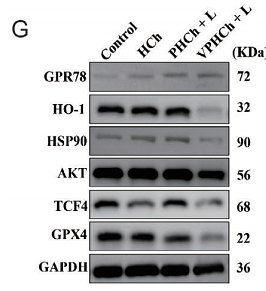
Journal: Advanced Functional Materials
アプリケーション: WB
交差性: Mouse
掲載日: 2025 Mar
-
Citation
-
Coordinated modulation of glucose metabolism and immunity via metal-drug nanovesicles for hepatocellular carcinoma therapy
Author: Mengjie Kong, Liyan Qiu
PMID: 40516574
Journal: Journal Of Controlled Release
アプリケーション: WB
交差性: Mouse
掲載日: 2025 Jun
-
Citation
-
Tumor Microenvironment-Driven Structural Transformation of Vanadium-Based MXenzymes to Amplify Oxidative Stress for Multimodal Tumor Therapy
Author: Hai Zhu, Tinghua Li, Xinhao Peng, Xiaoxian Zhang, Xuequan Zhang, Qiusheng Wang, Lei Lei, Jun Zhang, Bin He, Jun Cao
PMID: 39853632
Journal: Advanced Science
アプリケーション: WB
交差性: Mouse
掲載日: 2025 Jan
-
Citation
-
Engineered MEVs for photoreceptor-targeted delivery of USP25 to alleviate diabetic retinopathy
Author: Sun Yaoxiang, Chen Shenyuan, Qi Xiaoyuan, Sun Yuntong, Jiang Zhengmei, Chang Jie, Ma Yongjun, Huang Jin, You Benshuai, Sun Fengtian
PMID: 40830790
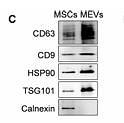
Journal: Journal Of Nanobiotechnology
アプリケーション: WB
交差性: Mouse
掲載日: 2025 Aug
-
Citation
-
Identification of hub genes associated with oxidative stress in heart failure and their correlation with immune infiltration using bioinformatics analysis
Author: Jianjun Gu, Li Na Zhang, Xiang Gu, Ye Zhu
PMID: 37609434
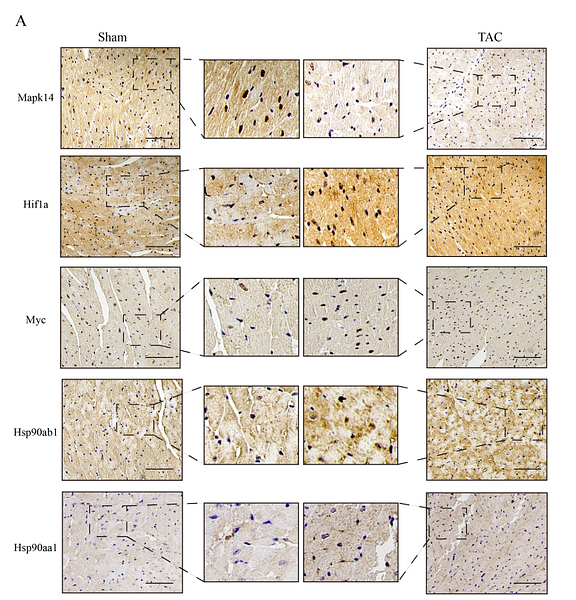
Journal: Peer J
アプリケーション: IHC-P
交差性: Mouse
掲載日: 2023 Aug
-
Citation
-
HEAT SHOCK PROTEIN 90.6 interacts with carbon and nitrogen metabolism components during seed development
Author:
PMID: 36652388
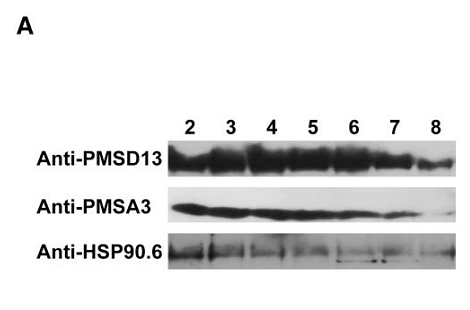
Journal: Plant Physiology
アプリケーション: WB
交差性: Maize
掲載日: 2023 Apr
-
Citation
-
Amelioration of LPS-induced inflammatory response and oxidative stress by astaxanthin in Channa argus lymphocyte via activating glucocorticoid receptor signalling pathways
Author: Mu-Yang Li, Chun-Shan Gao, Xiao-Yan Du, Lei Zhao, Xiao-Tian Niu, Gui-Qin Wang, Dong-Ming Zhang
PMID: 3NOPMID25021001
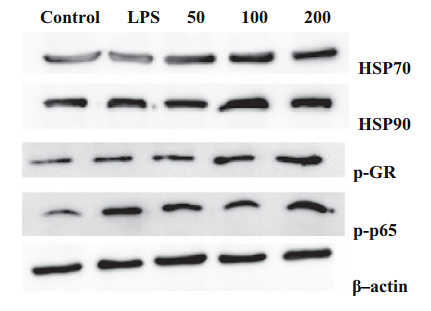
Journal: Aquaculture Research
アプリケーション: WB
交差性: Channa argus
掲載日: 2020 Mar
-
Citation
同じターゲット & 同じ経路の製品
Hsp90 beta Recombinant Rabbit Monoclonal Antibody [SY46-01] - BSA and Azide free
Application: WB,IF-Cell,IF-Tissue,IHC-P,FC
Reactivity: Human,Mouse,Rat
Conjugate: unconjugated
HSP90 Beta Recombinant Mouse Monoclonal Antibody [2-1-G3-R] - BSA and Azide free
Application: WB,IHC-P,IF-Cell
Reactivity: Human,Mouse,Rat
Conjugate: unconjugated
HSP90 Beta Mouse Monoclonal Antibody [2-1-G3]
Application: WB,IHC-P
Reactivity: Human,Mouse,Rat
Conjugate: unconjugated
HSP90 Beta Recombinant Mouse Monoclonal Antibody [2-1-G3-R]
Application: WB,IHC-P,IF-Cell
Reactivity: Human,Mouse,Rat
Conjugate: unconjugated





